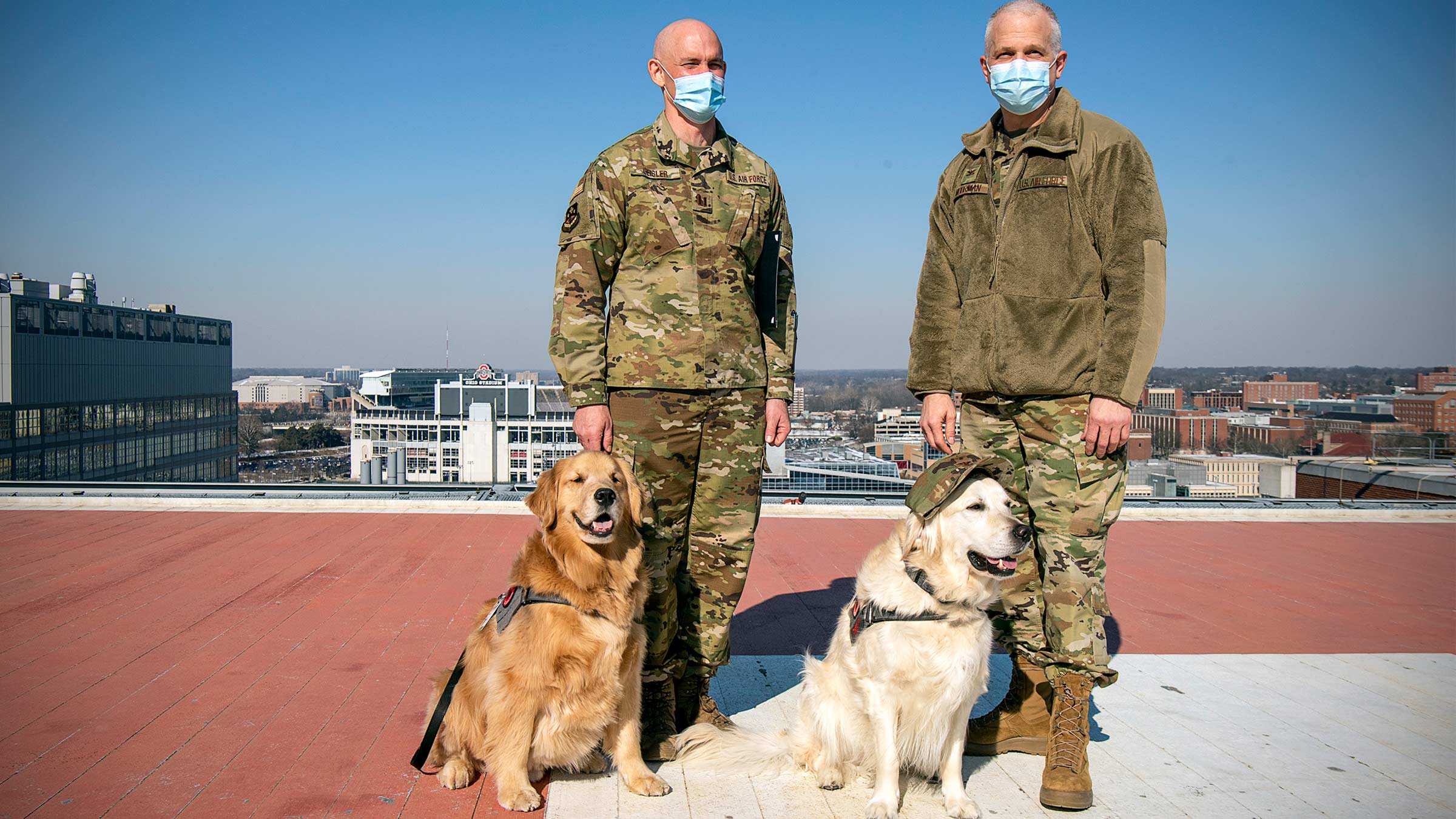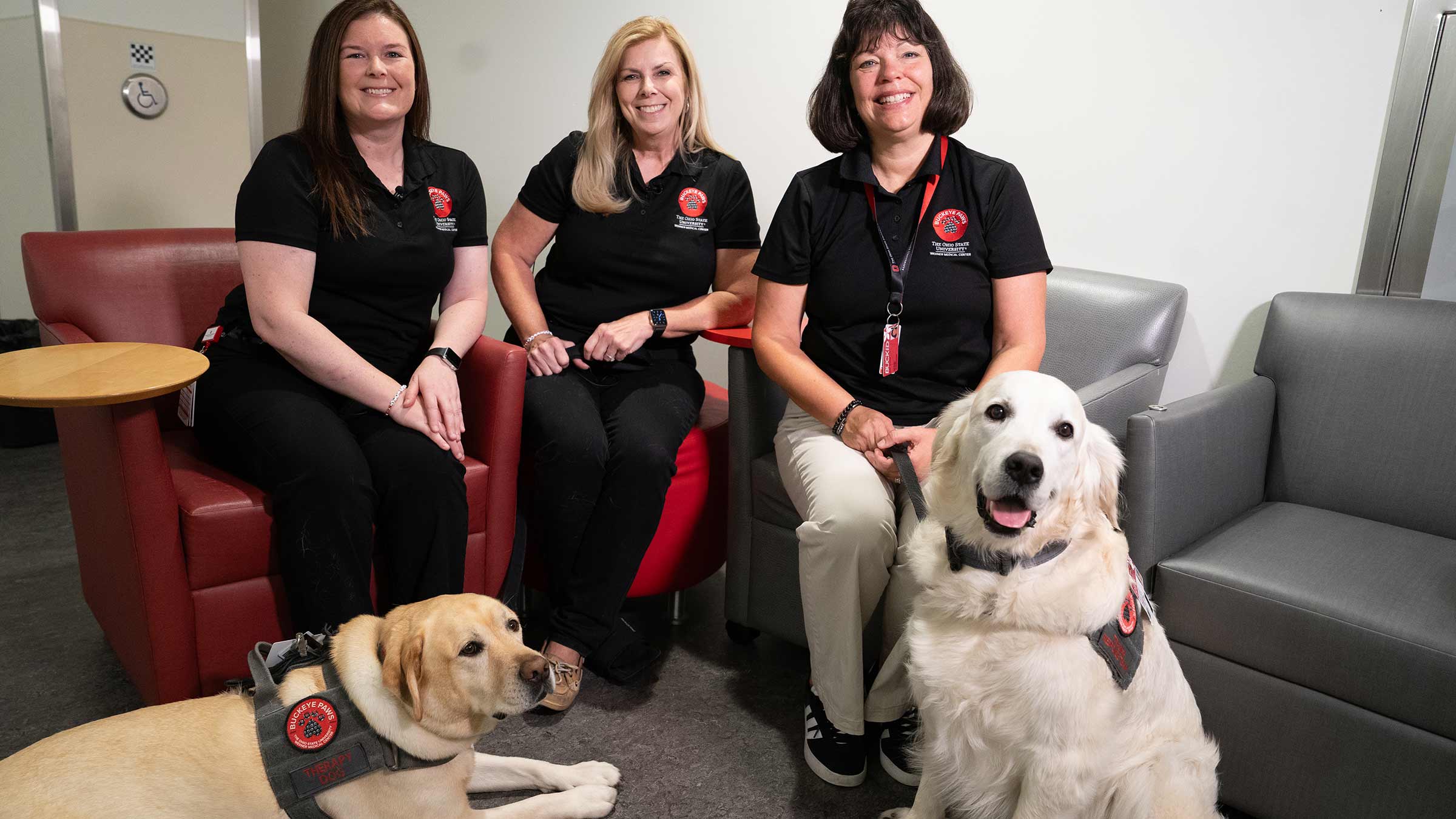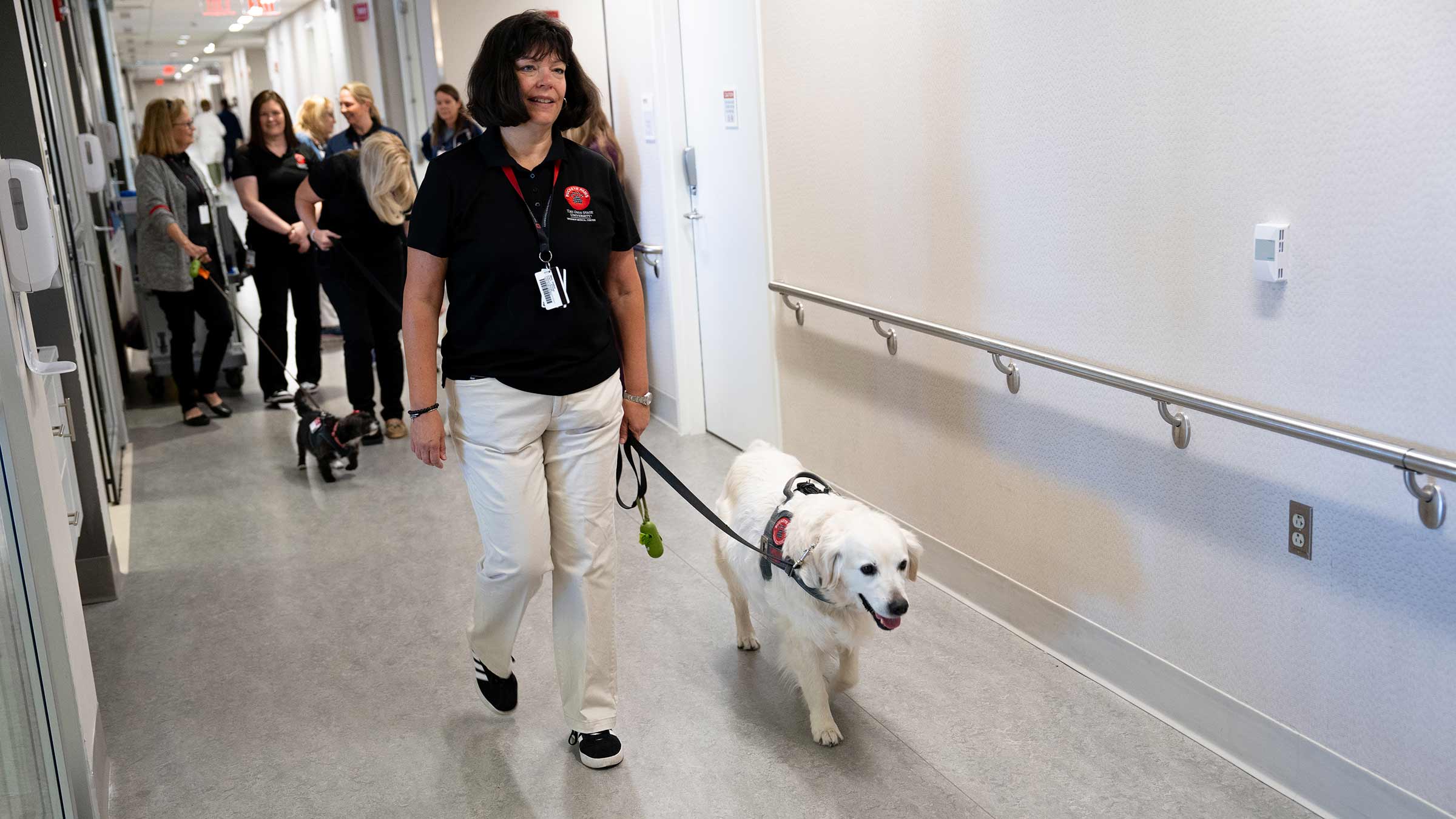Healing touch: Therapy dogs fetch stress from health care workers
Ohio State’s unique approach to employee wellness is enhanced by the four-legged staff members of Buckeye Paws.
A special program called Buckeye Paws at The Ohio State University Wexner Medical Center is helping to alleviate stress among hospital employees through the healing presence of therapy dogs. These canine companions visit various units, offering comfort and companionship to staff members working in high-pressure environments.
The program arrived at the perfect time, relieving the emerging stress of frontline workers as the world shifted dramatically in 2020 during the COVID-19 pandemic.
“Whenever I see them on the floor, my heart just explodes. They calm me down and put a huge smile on my face. I always take 10 minutes off from whatever I’m doing to see the dogs,” says Priya Varma, DO, a clinical assistant professor of internal medicine.
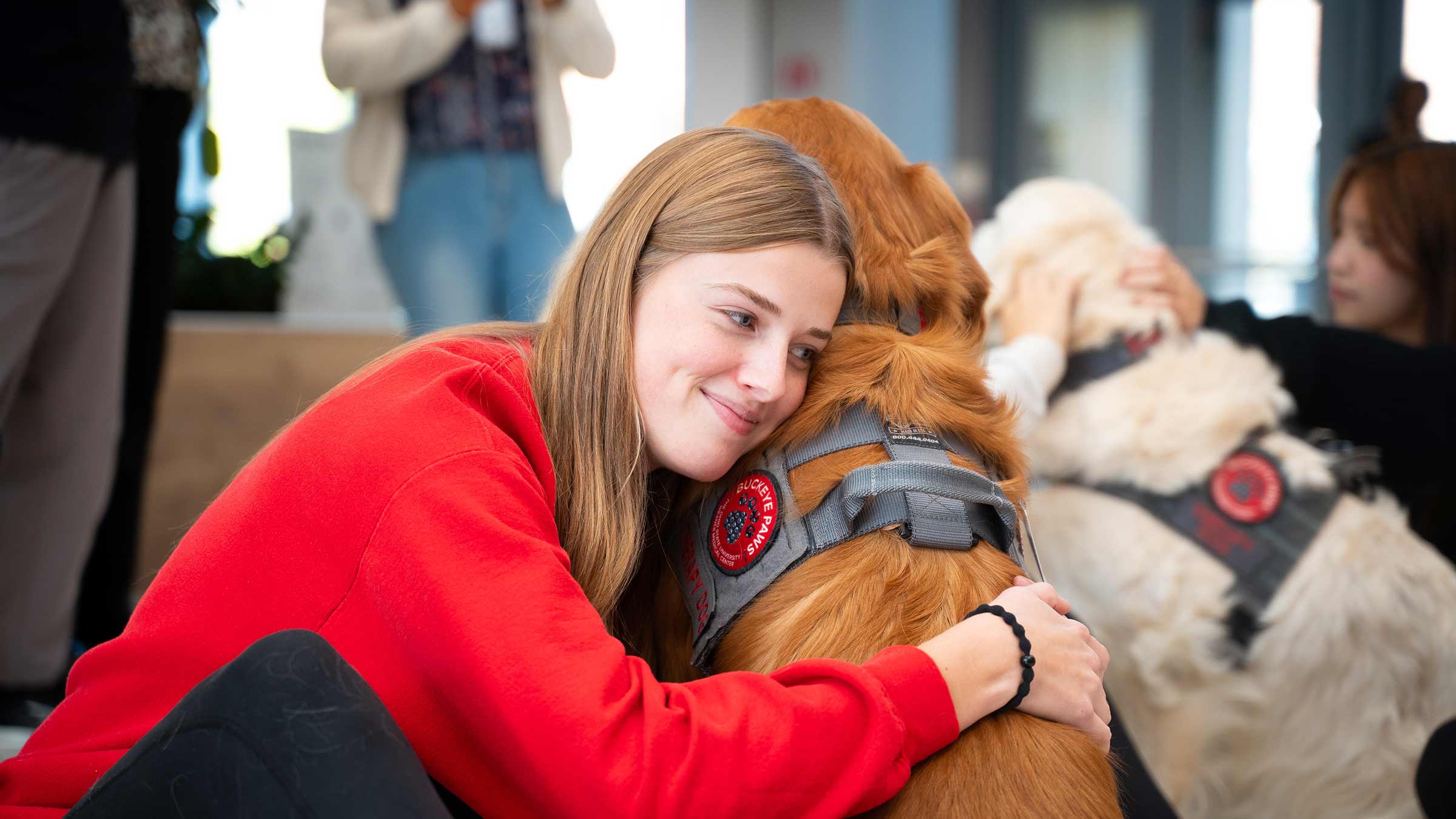
Data proves the power of dog therapy
A new study conducted by researchers from The Ohio State University Wexner Medical Center, the College of Medicine, and the College of Nursing highlights the mood-boosting benefits of the Buckeye Paws Program.
The pilot study, published in the International Journal of Complementary & Alternative Medicine, evaluated the impact of animal-assisted therapy on health care workers’ stress, burnout, work engagement and mood. It found that self-reported positive mood nearly doubled among those who engaged with the highly trained dog-handler teams.
The study involved 64 participants, including physicians, nurses, nurse practitioners, respiratory therapists, rehabilitation therapists, patient care associates and unit clerks from two intensive care units and two medical-surgical units.
Over eight weeks, the workers had free interactions with seven certified therapy dogs, provided by hospital employee volunteers, three times a week. Prior to and following each session, participants filled out a mood scale, showing a significant improvement in their mood after spending time with the dogs. Many also reported a decrease in stress and burnout.
“There was free interaction with the dogs that people could spend as much or as little time as they wanted,” says Beth Steinberg, PhD, RN, the study’s principal investigator and a co-founder of Buckeye Paws. “Prior to their interactions, we asked them to fill out a basic one-to-ten mood scale. And then, after the interaction, they did that again.”
A profound impact on health care workers
These findings further support the success of Buckeye Paws, which was already known for its positive impact on staff. Program manager Aimee Mitchell often hears from staff members about the profound effect the dogs have.
“When we go out, people say they wouldn’t have been able to make it through without these wonderful dogs,” says Mitchell.
The idea for Buckeye Paws originated from employees, including Steinberg and Mary Justice, associate executive director of Patient Care Services and Clinical Transformation. Both attended therapy classes with their dogs, Brienne and Shiloh, and envisioned creating a program to support staff well-being. Together, they met Mitchell, shared their passion for animal-assisted therapy, and developed Buckeye Paws into the thriving program it is today.
“There’s a lot of evidence that interacting with an animal helps decrease blood pressure, stress, and anxiety, and also improves mood,” says Steinberg, owner of Brienne, a yellow Labrador retriever. “It creates a sense of connection and improves collaboration and communication.”
Rustin Moore, DVM, PhD, dean of the College of Veterinary Medicine, adds, “Research shows that people’s health — whether physical, social, behavioral, emotional, mental or psychological — is improved by interacting with pets. Biological effects like decreased cortisol and increased oxytocin help explain the positive impact of the Buckeye Paws dogs on our health care team.”
Buckeye Paws program grows to serve university
Many of the therapy dogs have become local celebrities, amassing followers on social media platforms like Instagram. Shiloh (@sirshilohthegolden), a golden retriever, gained widespread attention after a physician posted his photo online. “Shiloh went viral,” says Justice. “He pops up everywhere.”
The program has expanded beyond the Ohio State Wexner Medical Center to the broader university community, with more dogs being trained to provide support to faculty, staff and students. At the medical center, the dogs visit units several times a week, where staff members take breaks to interact with them.
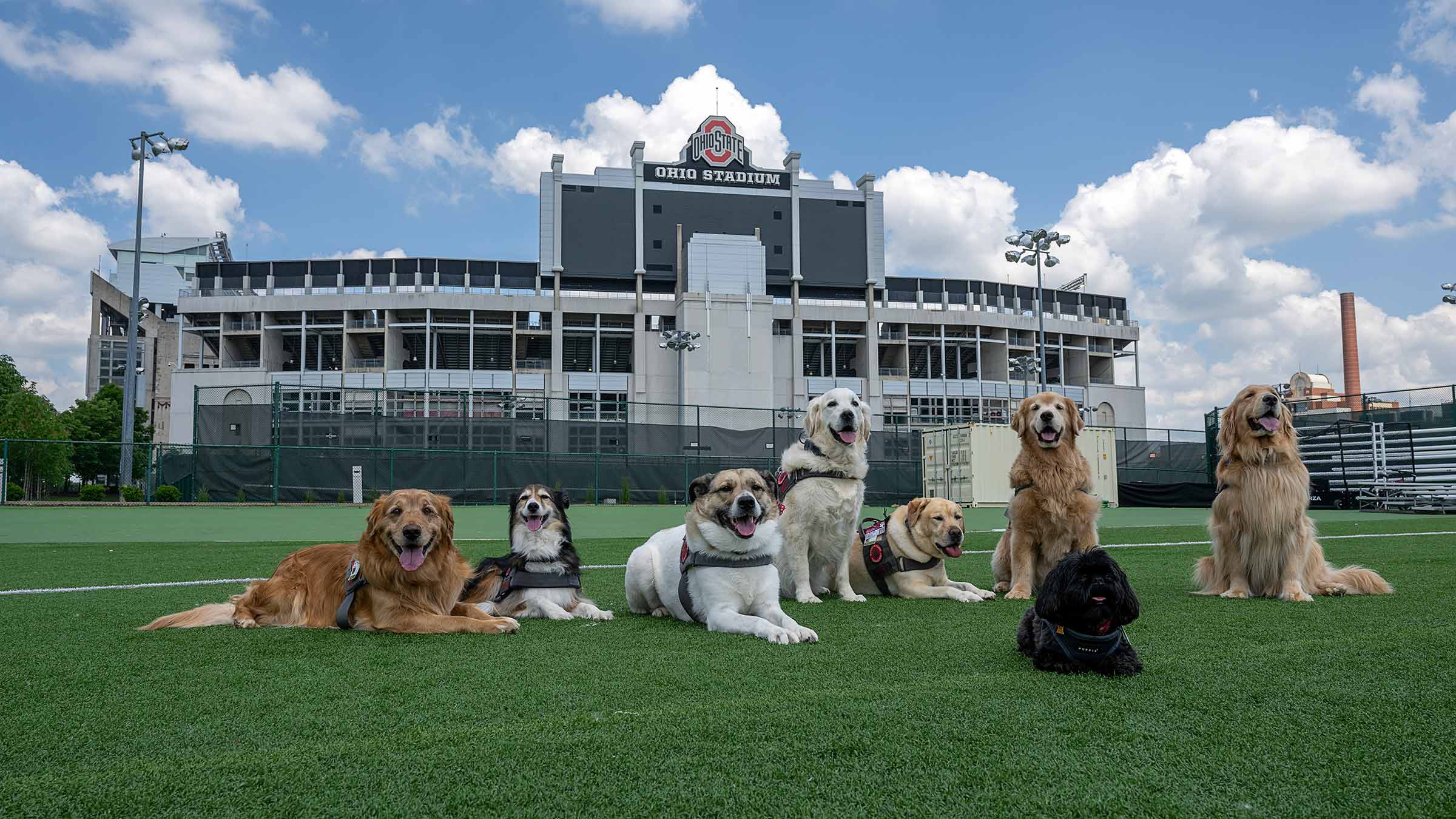
“Something like this can make your day. Interacting with the dogs just fills your heart,” says Ryan Beattie, a nurse anesthetist.
By the end of their visits, the dogs are often pleasantly tired. “It wears them out because they’re feeling your feelings,” Justice says. “They’re always sensing what we’re doing and trying to interpret our interactions. They’re givers, and they aim to please.”
Becoming a Buckeye Paws therapy dog
The Buckeye Paws therapy dogs undergo a rigorous training and certification process, including temperament testing, obedience training and acclimation to the medical environment. “It’s a pretty intense process that takes about twelve to sixteen weeks,” Justice says.
The original four dogs — Brienne, Shiloh, Radar (a Labrador retriever owned by ReNea Owens, associate director of Rehabilitation Services), and Ellie (a German shepherd owned by Emily Lewis) — played a crucial role in the program’s early success. They were commemorated with plush toys created in their likeness, with sales supporting Buckeye Paws and training for new therapy dogs.
“Being part of this program has been incredibly rewarding,” Justice says. “These dogs bring so much joy and comfort to everyone they meet. It’s wonderful to see the positive impact they have on our staff and community.”
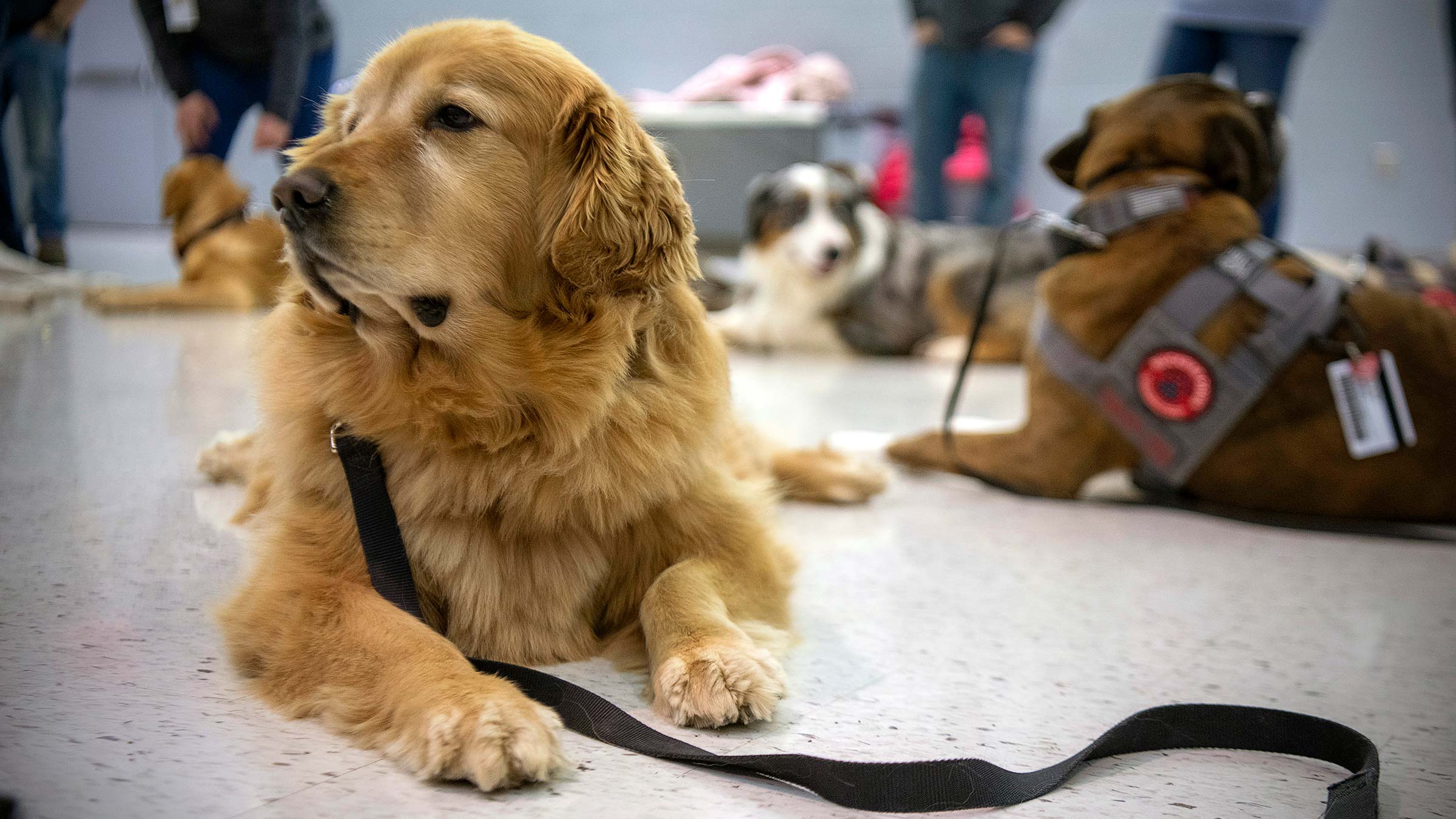
Golden retrievers like Ashby (@ashby.adventures) must pass a temperament test and complete obedience classes before serving in a medical environment.

Supporting therapy dogs is pawesome
Your donation to Buckeye Paws supports the wellness of health care workers at The Ohio State University Wexner Medical Center by funding programming, training and supplies for the dogs of Buckeye Paws.
Give today



